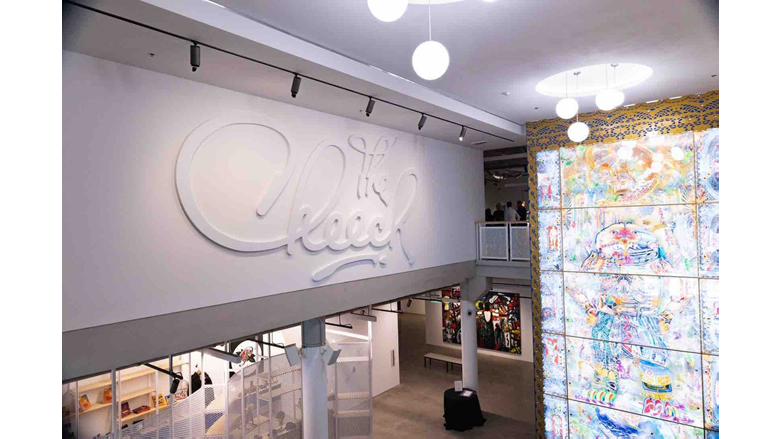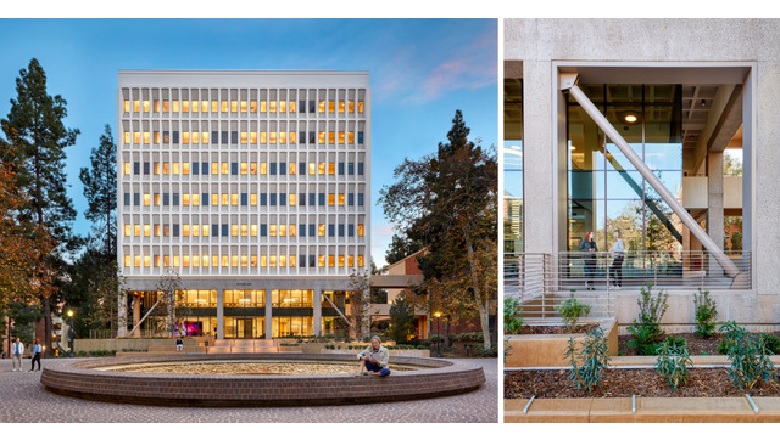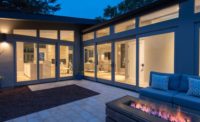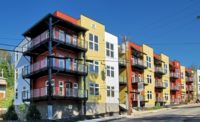Earthquakes are common, but collapsed buildings, with contemporary structural design, are fortunately very rare. The same is not true in mid-century modern construction, which can be far more deadly, as the structures often lack sufficient reinforcing to withstand seismic forces. Many concrete buildings completed prior to the mid-1970s, for example, require retrofits to bolster their beams and columns, said architect John Lesak, principal-in-charge of Page & Turnbull’s Los Angeles office.
Savvy owners are acting immediately, taking advantage of the post-pandemic era’s lighter occupancy levels to coordinate and stage seismic interventions without causing major disruptions to building tenants and occupants. Some are responding to new ordinances in places from Oregon to South Carolina.
In fact, today the race is on to preserve some of the country’s most iconic modernist buildings by bracing them with inconspicuous, thoughtfully designed “seismic strengthening,” according to Page & Turnbull. While at least 1 million homes need earthquake retrofits, the Los Angeles Times reported, the most historically important mid-century buildings are bigger structures in city centers and on college campuses, the firm advised.

Photo courtesy of Page & Turnbull
“Major structures from the Golden Gate Bridge and U.C. Berkeley’s 1965 art museum to Hollywood’s 1956 Capitol Records Building and UCLA’s 1965 Pritzker Tower are all a focus now for both preserving our cultural legacy while also ensuring public safety,” Lesak said. “Recently enacted rules like the Non-Ductile Reinforced Concrete Ordinance in Los Angeles, known as NDC, are new and complex — and challenging for building owners.”
L.A.’s New NDC Rule Makes Waves
Signed into law just five years ago, the City of Los Angeles ordinance calls for all concrete buildings designed prior to 1977 to achieve minimum structural requirements within 25 years — or face the wrecking ball.
“We’re working on some of the first NDC retrofit projects — including one of the first commercial buildings to be permitted under the rule,” Lesak said, noting that Page & Turnbull recently headlined a six-part, FEMA-sponsored series called “Home, Safe Home” on seismic safety and rehabilitations for historic single-family residences. “We’re telling historic building owners to begin planning voluntary retrofits rather than awaiting mandatory measures, which can be much less convenient and far more costly.”
These “seismic resiliency” projects generally include a mix of historic preservation, architectural design and code compliance measures along with retrofit cost estimating, public safety reporting and, of course, structural analysis. Many of the architectural designs alleviate rehab requirements while also protecting historic features.

Photo courtesy of Kim Rodgers via CO Architects and Page & Turnbull
“At the iconic Capitol Records Building, a 13-story mid-century commercial building, the pandemic eased the intrusive seismic retrofit process because many areas were unoccupied, allowing construction crews better access,” Lesak said. At The Cheech Marin Center for Chicano Art & Culture in Riverside, California, created from a vacant 1964 library, Page & Turnbull designed a new opening cut into the second-floor slab, sized specifically to creatively address seismic performance and enhance safety at a reasonable cost.
“Rarely does the government require owners to bring their historic buildings up to code,” said Lesak, who has served as chair of the Historic Resources Committee for the American Institute of Architects Los Angeles chapter. “In this case, however, it’s mandatory.”





Report Abusive Comment